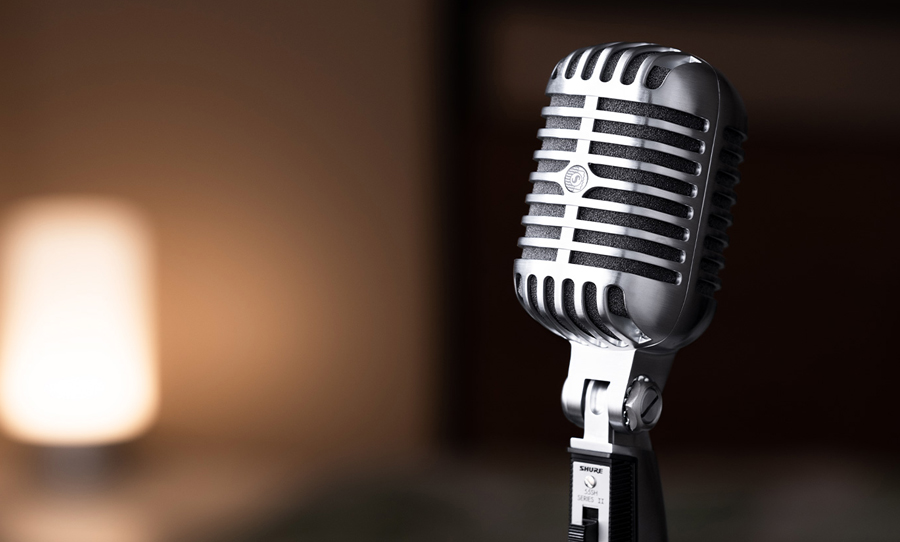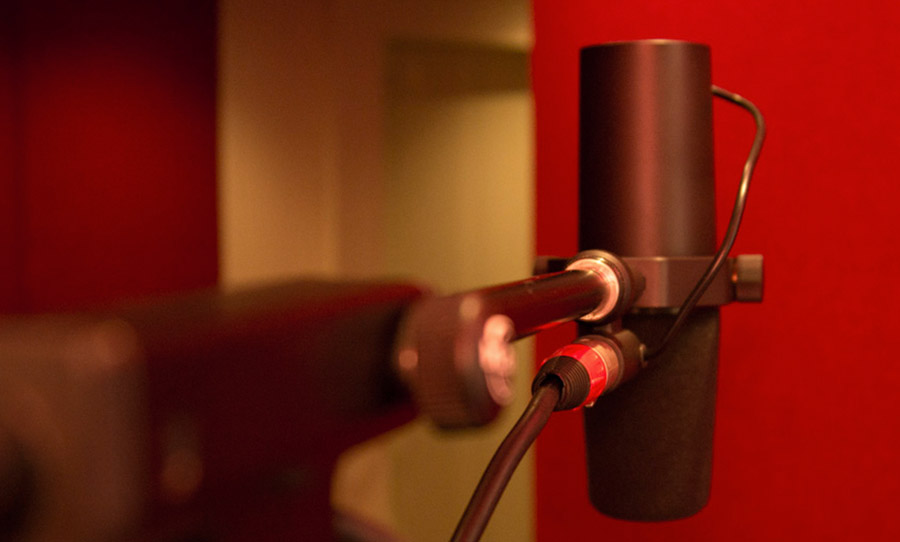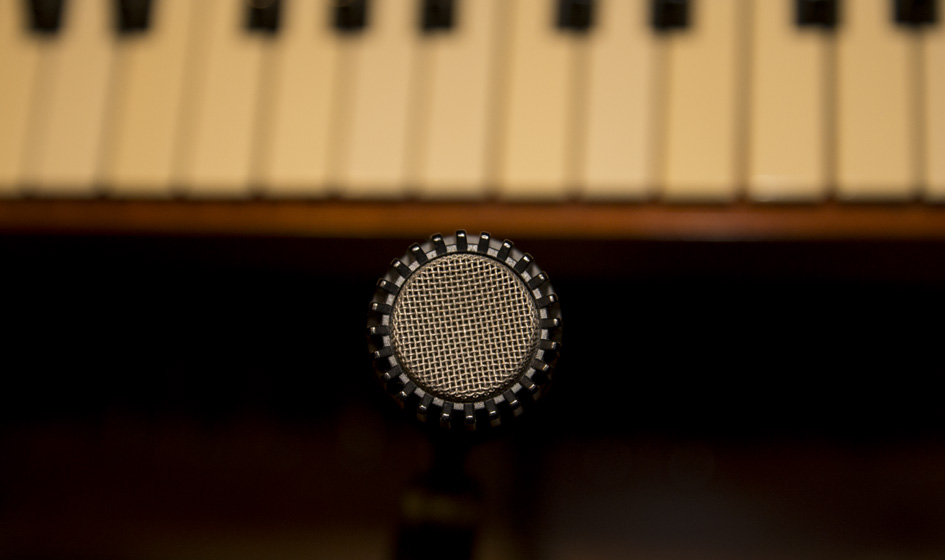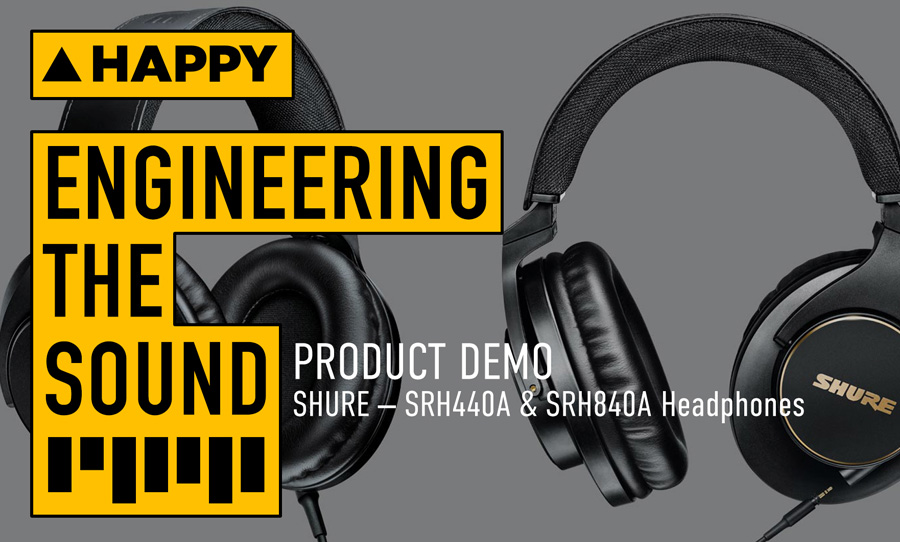For almost a century, Shure has been the go-to microphone brand for performers both on stage and in the studio. What exactly makes them so iconic? Let’s delve into the classic models to find out.
From karaoke bars to high-end studios, from rock ‘n’ roll stages to DJ booths — Shure has a presence everywhere. Its iconic status was forged by its inimitable consistency and reliability of tone, its style, and its near-indestructible quality that persists across each microphone model.
In celebration of Shure’s Iconic Microphone Month (which includes some pretty sweet savings for all you songwriters out there), we tip our hat to four giants of the Shure catalogue: SM58, 55SH Series II, SM7B, and SM57.
SM58: the mic for all occasions

If you’re in a punk rock dive bar, on the wedding dance floor, at a school assembly, or basically anywhere you’re expecting to hear someone’s voice through a P.A. system, you’re going to glimpse the SM58 in action. It’s as iconic as it gets.
The SM58 got the gig in 1966. Even if you only have a cursory knowledge of rock history, you’ll recognise it as a pivotal moment. It was the peak of the British Invasion and the music industry was harnessing the seismic power of world touring for the first time. The only problem: the gear was a bit crap.
The enterprising engineers from Shure spotted a gap in the market for gear that could withstand the rigours of the road and thus the SM58 was born. What exactly set this microphone apart from the rest?
The pneumatic shock-mount was a major leap forward. It essentially created a cradle for the capsule and allowed for more robust handling without negatively affecting the sound. And in terms of volume, the SM58 is a true warrior that’s able to soak up 94dB SPL and translate it with remarkable clarity.
In terms of durability, the SM58 soldiered on. Not only has it been famously abused by the likes of The Who’s Roger Daltry (who had a habit of happily swinging one at the end of the mic cable) and Henry Rollins (who would actually crush its grill during gigs — don’t try this at home, kids!), it was also the personal favourite of legends like Bono for use in the studio, immortalising countless soaring vocal performances from the U2 frontman.
But the story of Shure’s iconic microphones stretches back even further into the primordial era of rock ‘n’ roll. It’s time to introduce the King.
55SH Series II: the sound of rock ‘n’ roll

Ready to grease your hair and visit the 1950s? The 55S was surely the most memorable mic of the era, due in large part to the endorsement of the King: Elvis Presley.
In each period of Shure’s history, the company broke new ground. In the case of the 55S, it was a dynamic pioneer making it more suitable for onstage purposes, rather than the larger and more fragile ribbon and condenser mics of the time.
As the Elvis juggernaut was reaching full speed, he needed a microphone that helped his voice cut through the absolute mayhem of his gigs. What’s more, he needed a style icon that was going to match his unprecedented charisma. Modelled on the grill of the 1937 Oldsmobile Coupe Six, the 55S is one of the defining statements of art deco design.
Nowadays, this microphone lives on as the 55SH Series II. It’s no antique piece either; in the finest Shure tradition, it’s built to withstand the elements, with a shock-mounted cartridge to maintain fidelity amidst the onstage action.
But if you think Shure’s microphone innovations ended in the ’50s and ’60s, the next model is here to prove you wrong.
SM7B: a content creator’s dream

The SM7B brought an entirely new silhouette to the Shure oeuvre. Developed in the 1970s, the SM7B is unashamedly bulky, making it more of a studio thoroughbred (though it still has the capacity to shine on stage).
Though it’s yoke-mounted and therefore intended to hang upsidedown (perfect for radio broadcasting), it quickly found its feet in the music studio, too. Powered by the Unidyne III cartridge, the SM7B has a more sophisticated tonal signature than most dynamics, able to translate the finer details of a vocal recording with ease.
Legendary engineer Bruce Swedien called on the SM7B to record the lead vocals on Michael Jackson’s Thriller. Considering the unlimited resources available in this project (he literally could have used any microphone in the world), tapping the SM7B was a bold decision, to put it mildly. The resulting success from this monster album obviously spoke for itself — it also sealed the SM7B’s fate as an icon.
Owing to a lockdown-led podcasting, YouTubing, and streaming explosion, the SM7B is in the midst of a renaissance. It couldn’t be better suited for this kind of content production: tailor-made for the voice, able to withstand and translate a wide dynamic range, and with brilliant off-axis rejection.
So, we’ve established the SM7B’s status as a celebrity that will no doubt appear on our favourite YouTube videos for decades to come. Let’s round off the list by paying tribute to a microphone that does a lot of heavy lifting behind the scenes.
SM57: the ultimate workhorse

Just before the SM58 arrived, the world caught its first glimpse of the SM57. Auspiciously beginning its life as the official microphone of the White House, the humble SM57 has made its way into every sound engineer’s mic locker. Why?
At the top of the long list of the SM57’s virtues is its versatility. Admittedly, you probably wouldn’t reach for this microphone in your next vocal recording session, but for just about anything else, the SM57 is ready and waiting.
That said, there are a couple of characteristics that make this microphone an absolute superstar on guitar cabinets and snare drums: aka, two of the most important sounds in any rock ‘n’ roll mix.
The SM57 is gifted with quite a steep roll-off of frequencies below 200 Hz, as well as a pleasing bump that begins to rise at around 2 kHz, peaking at approximately 6 kHz, before rounding off. In musical terms, that means tone free of muddy or boxy low-mid range, plus a nice little sugar hit to help sounds poke through the top end of a mix. Put simply, snares and guitar amps just don’t sound like snares and guitar amps with the help of the SM57. Therefore, it’s always the first item on any studio’s shopping list.
For this month only, you can begin (or expand) your Shure collection with a 20% discount. Plus, if you buy a wired mic, you’ll go in the running to receive a limited edition Shure T-shirt!
Head over to Jands for all the details.


